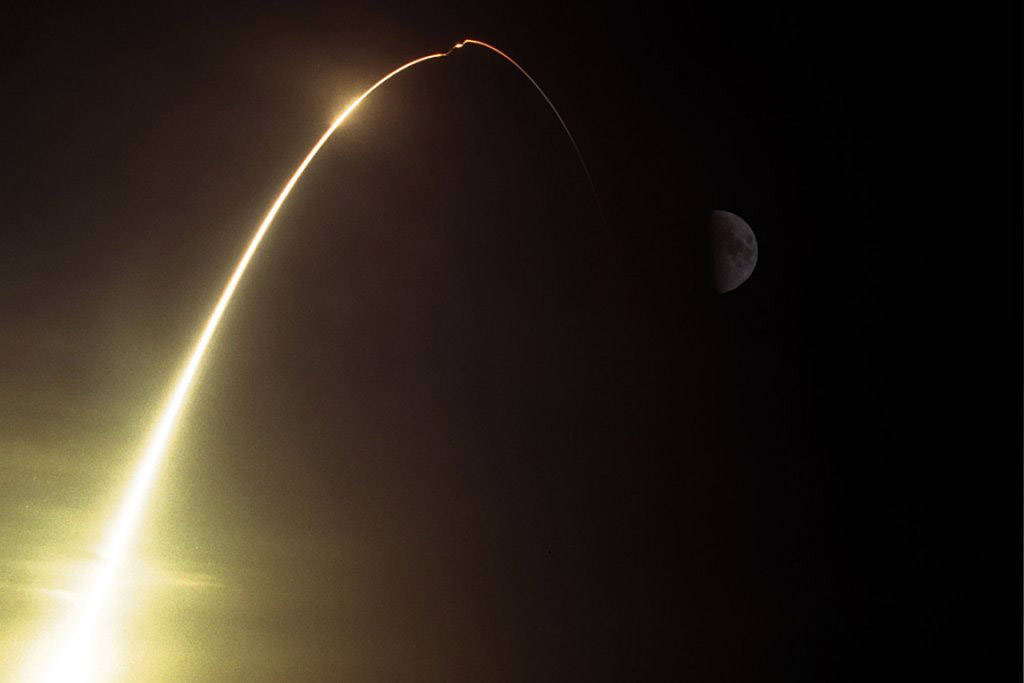
On Tuesday, Jan. 6, 1998, at 9:28 p.m. EST, NASA’s Lunar Prospector spacecraft climbed into the sky above Cape Canaveral Air Station riding an Athena II rocket. Representing NASA’s first lunar mission since the 1972 flight of Apollo 17, the launch occurred on the 30th anniversary of the launch of the Surveyor 7 lunar lander.
The three stage launch vehicle’s fiery trail is in the foreground of this time exposure while the moon, near first quarter phase, is shown in the background some 250,000 miles from the Cape. Prospector will cover that distance in about 5 days, entering lunar orbit on Sunday.
Prospector carries no cameras to image the well-photographed lunar surface. Instead, its array of instruments will map the lunar gravity, magnetic field, internal structure, and surface composition. The result, a detailed global view of current lunar properties, is expected to dramatically impact humanity’s understanding of the origins of the moon and the solar system. From its vantage point in polar orbit, only 63 miles above the lunar surface, Prospector will also conduct a sensitive search for water ice which may be preserved in permanent shadow at the moon’s south pole.Image Credit: NASA

























